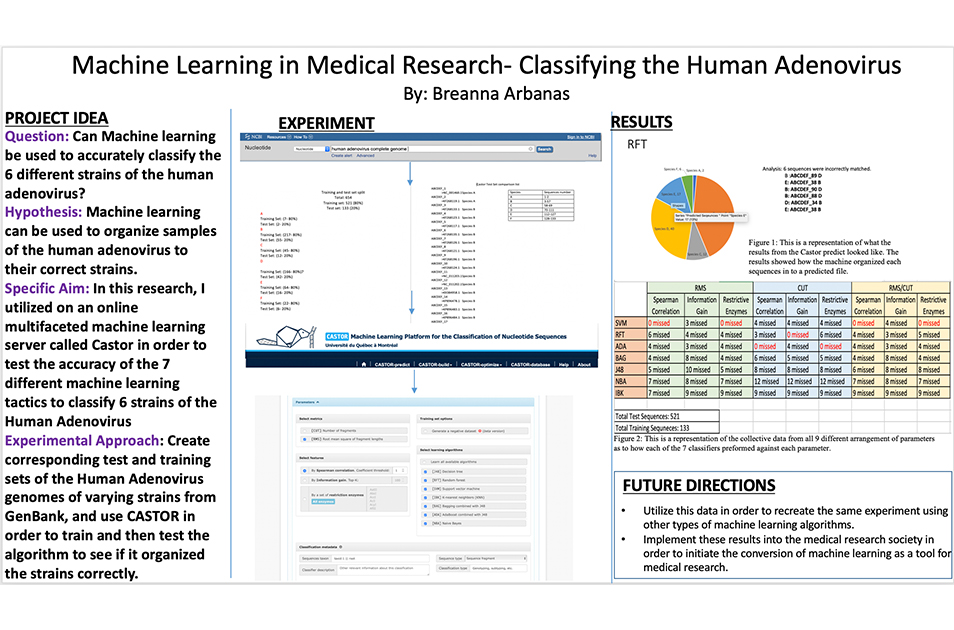Contact us
401 W. Kennedy Blvd.
Tampa, FL 33606-13490
(813) 253-3333
When Breanna Arbanas’ biology research project fizzled in Fall 2019, she was frustrated. The data wasn’t producing any significant results. But it was one of many lessons the current senior was to learn about research. Breanna Arbanas ’21 is using machine learning to identify human adenoviruses. “Machine learning is so new that every time a mistake came up I couldn’t Google it,” she said. “Dr. Pad and I would have to analyze the issue and work through it together.”

“This research helped me learn that there are so many things that are going to go wrong, and you just have to take a step back and change your ideology about it and you keep moving forward,” Arbanas said. “I think that about research is fascinating but also frustrating at the same time.”
By Spring 2020, she had another project posed and an approved application for a Summer Undergraduate Research Fellowship (SURF), “Classification of Human Adenoviruses Using Machine Learning,” with mentor Pad Mahadevan, associate professor of biology.

“This research helped me learn that there are so many things that are going to go wrong, and you just have to take a step back and change your ideology about it and you keep moving forward,” Arbanas said. “I think that about research is fascinating but also frustrating at the same time.”
Arbanas is in UT’s Honors program, is active in the student organization Live Well UT and founded the organization UT Wise Women, which focuses on women's health promotion in the community. She is in the process of composing her research into a paper that she and Mahadevan hope to submit for publication by the end of the semester.
“I’m more confident in presenting and talking to people. I worked on this for a long time and I want people to know about it and see it. I feel like it also made my connections here at UT a lot deeper,” Arbanas said. “Even Dr. (Eric) Freundt, who is in charge of the SURF program, we’d meet every week and he made it very clear that if I ever needed anything, he was just an email away. I felt it was a very genuine response. It helped me have more pride in myself and pride that I was going to this school and that I got to do this.”
Throughout the Q&A in her presentation at the Virtual Summer Undergraduate Research Symposium on Sept. 4, Arbanas encouraged students wondering how to get involved to take the leap.
Have a story idea? Contact Jamie Pilarczyk, Web Writer
Read more UT Life stories.
Subscribe to News and UT Life.
More UT News